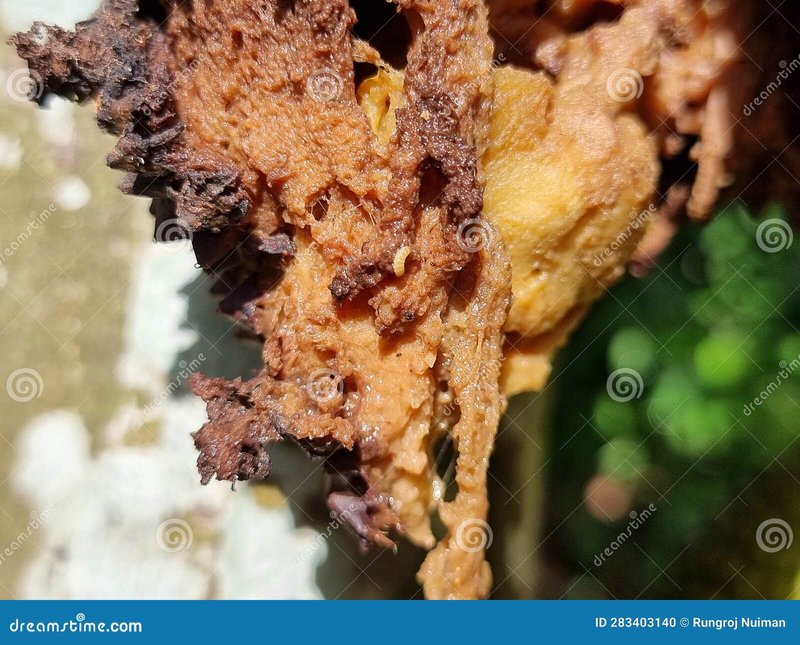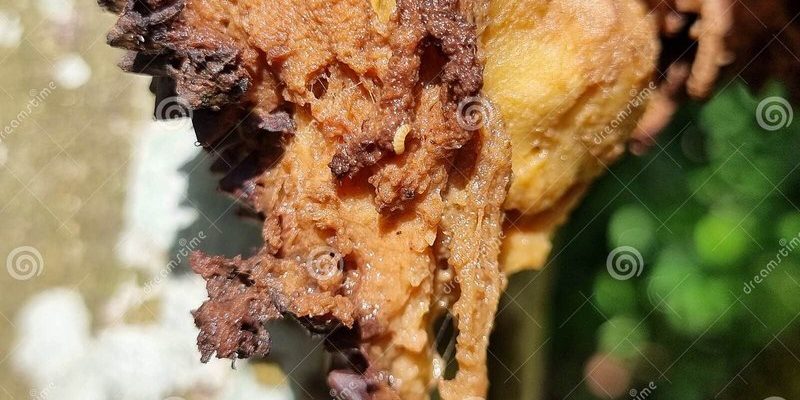
Inchworms, whose real names often include species like **Geometridae**, are the larvae of moths. They’re called inchworms because of the way they move, inching along on their bellies in a unique looping motion. While they might look harmless, they can munch on the leaves of young trees, and that can really stunt their growth. Imagine trying to grow your favorite tree but finding that its leaves are being eaten away. Not ideal, right? In this article, we will unravel the relationship between inchworms and young fruit trees, detailing what they do, why it matters, and how to keep your trees thriving.
What Are Inchworms?
Inchworms are fascinating little critters. They’re the larval stage of various moth species, primarily from the family **Geometridae**. You might recognize them by their characteristic looping gait, which resembles a measuring tape being stretched and contracted—hence the name “inchworm.”
These creatures are usually a few centimeters long, with green or brown bodies that help them blend in with tree leaves. This camouflage tactic protects them from predators, which can be a real lifesaver! When you see them inching along, they might look cute, but they can also be hungry. Their primary diet consists of young leaves, which is where things can get dicey for your fruit trees.
You might be wondering about their life cycle. Inchworms hatch from eggs laid by adult moths. Once they emerge, they start feasting on leaves, and that’s when they can become a problem for young fruit trees. If left unchecked, a few inchworms can quickly turn into a colony that can severely damage your tree’s foliage.
How Do Inchworms Affect Young Fruit Trees?
Inchworms have a reputation for being leaf-chewers, and for good reason. When they munch on the leaves of young fruit trees, they can stunt growth, weaken the tree, and even make it more susceptible to disease. Think of your tree as a sponge soaking up nutrients and sunlight. If inchworms are snacking on its leaves, that sponge isn’t going to soak up as much water or nutrients as it should.
**Visible Damage** is often the first sign of an inchworm infestation. Leaves may appear ragged, with holes or even entire sections missing. If you notice this, don’t ignore it! A young fruit tree with damaged leaves struggles to photosynthesize, which is vital for its growth.
Let’s say you planted a tiny apple tree this spring. If inchworms are busy eating away its leaves, that tree will have a much tougher time producing buds and blossoms next year. And without those flowers, you can kiss those crisp, juicy apples goodbye!
Identifying Inchworm Infestations
Spotting inchworms isn’t always easy, especially since they tend to blend in with their surroundings. However, there are some signs you can look for.
First, keep an eye on your young fruit trees for any **defoliation**—that’s a fancy word for leaf loss. If you notice leaves with missing chunks or a general decline in leaf health, it’s time to inspect further.
You might find the inchworms themselves hanging out on the undersides of leaves or hiding in tree branches. They often curl up to camouflage themselves, so you’ll need to get a little technical with your searching. Try using a flashlight during the evening when they’re more active, as these nocturnal creatures might be munching away under the moonlight.
Additionally, **frass**, or the tiny droppings left behind by inchworms, is another giveaway. If you see small green pellets on the ground or on leaves below your tree, it’s a telltale sign that inchworms have been nearby.
Natural Predators of Inchworms
One of the best ways to manage inchworm populations is to invite their natural predators into your garden. Many birds, including **chickadees**, **wrens**, and even some larger insects like **wasps** and **ladybugs**, enjoy snacking on inchworms.
Creating a welcoming environment for these helpful critters can significantly reduce inchworm numbers. Here are some ideas:
- Plant native flowers: Flowers like sunflowers, daisies, and coneflowers attract beneficial insects and birds.
- Create habitats: Adding birdhouses or leaving some bushy areas can make your yard more appealing to wild birds.
- Limit pesticides: While it may be tempting to reach for chemical sprays, they can harm beneficial insects. Go natural whenever possible!
By fostering a balance in your garden ecosystem, you’ll help control inchworm populations naturally while keeping your young fruit trees healthy.
Managing Inchworms: What You Can Do
If you do discover an inchworm infestation, don’t panic! There are several strategies you can use to tackle the problem. Here’s a quick rundown:
- Handpicking: If you see a few inchworms, you can simply pick them off by hand. It’s tedious but can work effectively for smaller infestations.
- Insecticidal soap: This is a softer approach than traditional pesticides. It can target the inchworms without harming beneficial insects if applied correctly.
- Neem oil: Another natural option, neem oil disrupts the feeding and growth patterns of inchworms. It’s worth considering if the infestation is getting serious.
- Monitoring: Keep an eye on your trees regularly. Catching infestations early can save you a lot of trouble down the line!
Every step you take toward managing inchworms helps pave the way for your trees to thrive. Remember, healthy trees can withstand some munching, but monitoring is key!
Preventing Inchworm Infestations in the Future
Once you’ve tackled an inchworm problem, you’ll want to implement strategies to prevent future infestations. After all, prevention is often easier than dealing with a full-blown invasion.
Here are a few tips to keep your young fruit trees safe:
- Regular pruning: Keeping your trees well-pruned can improve air circulation and reduce the likelihood of pests setting up camp.
- Healthy soil: Investing in nutrient-rich soil will help your trees grow strong and resilient against pests like inchworms.
- Crop rotation: If you’re planting multiple trees, rotating crops can minimize the risk of pests hanging around.
Sharing your garden space wisely and ensuring your trees have the nutrients they need makes it harder for inchworms to thrive.
The relationship between inchworms and young fruit trees is a classic tale of coexistence, where balance is key. While inchworms can pose a significant threat to your budding trees, understanding their habits can help you manage their impact effectively. By recognizing the signs of an inchworm problem early, encouraging natural predators, and implementing smart management strategies, you can protect your cherished trees and ensure they grow healthy and strong.
Taking care of your young fruit trees can feel like a labor of love, and knowing how to handle inchworms is a vital part of that journey. So next time you see a cute, wiggly inchworm, remember: they’re part of the ecosystem, but they need to play nice with your trees! With a little effort, you’ll be on your way to enjoying a bountiful harvest in no time.

